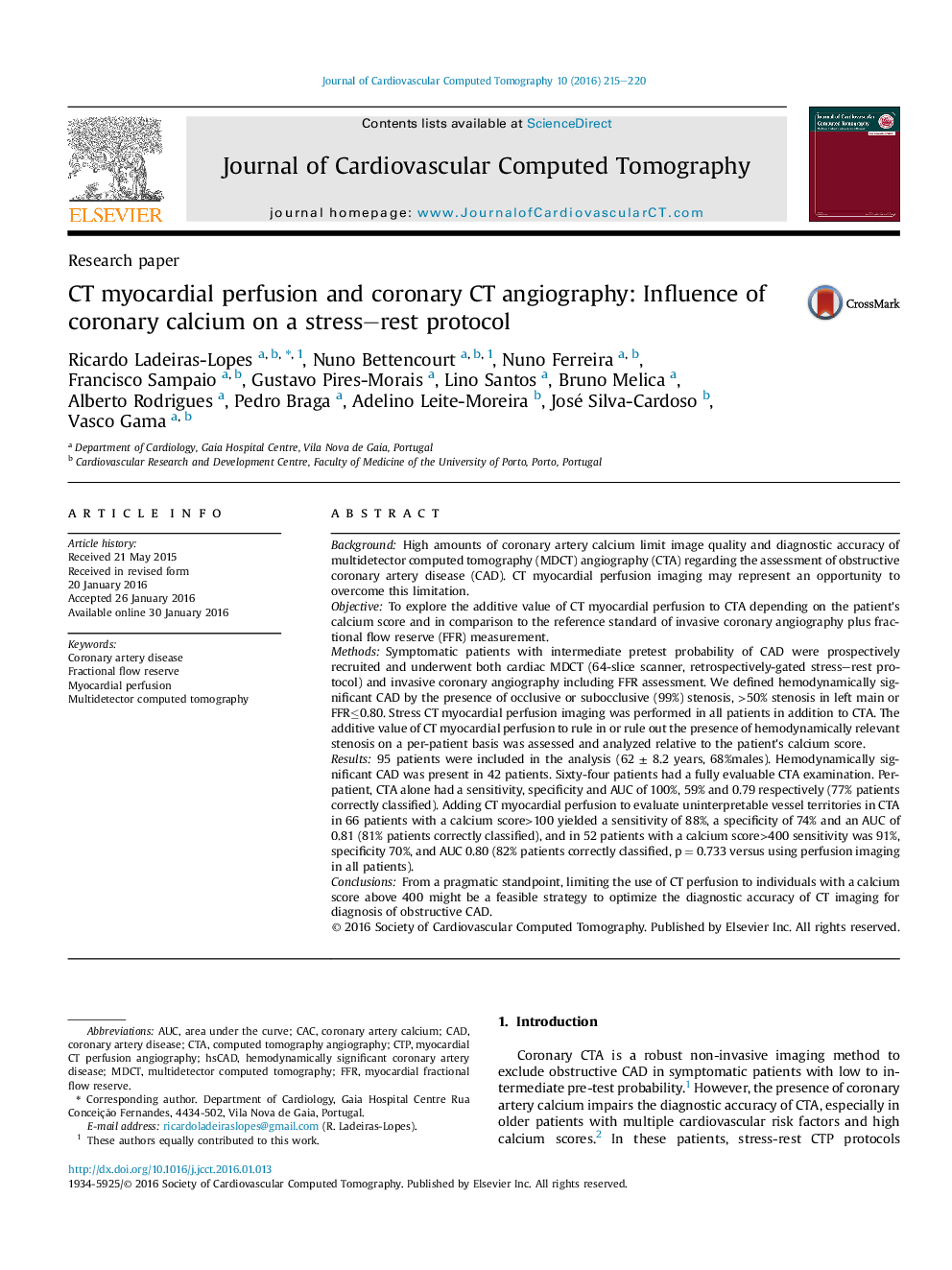| کد مقاله | کد نشریه | سال انتشار | مقاله انگلیسی | نسخه تمام متن |
|---|---|---|---|---|
| 2964254 | 1178681 | 2016 | 6 صفحه PDF | دانلود رایگان |

• High coronary calcium limits coronary CT angiography accuracy for diagnosis of obstructive coronary artery disease.
• Performing stress-rest CT perfusion in patients with high calcium score improves diagnostic accuracy.
BackgroundHigh amounts of coronary artery calcium limit image quality and diagnostic accuracy of multidetector computed tomography (MDCT) angiography (CTA) regarding the assessment of obstructive coronary artery disease (CAD). CT myocardial perfusion imaging may represent an opportunity to overcome this limitation.ObjectiveTo explore the additive value of CT myocardial perfusion to CTA depending on the patient's calcium score and in comparison to the reference standard of invasive coronary angiography plus fractional flow reserve (FFR) measurement.MethodsSymptomatic patients with intermediate pretest probability of CAD were prospectively recruited and underwent both cardiac MDCT (64-slice scanner, retrospectively-gated stress–rest protocol) and invasive coronary angiography including FFR assessment. We defined hemodynamically significant CAD by the presence of occlusive or subocclusive (99%) stenosis, >50% stenosis in left main or FFR≤0.80. Stress CT myocardial perfusion imaging was performed in all patients in addition to CTA. The additive value of CT myocardial perfusion to rule in or rule out the presence of hemodynamically relevant stenosis on a per-patient basis was assessed and analyzed relative to the patient's calcium score.Results95 patients were included in the analysis (62 ± 8.2 years, 68%males). Hemodynamically significant CAD was present in 42 patients. Sixty-four patients had a fully evaluable CTA examination. Per-patient, CTA alone had a sensitivity, specificity and AUC of 100%, 59% and 0.79 respectively (77% patients correctly classified). Adding CT myocardial perfusion to evaluate uninterpretable vessel territories in CTA in 66 patients with a calcium score>100 yielded a sensitivity of 88%, a specificity of 74% and an AUC of 0.81 (81% patients correctly classified), and in 52 patients with a calcium score>400 sensitivity was 91%, specificity 70%, and AUC 0.80 (82% patients correctly classified, p = 0.733 versus using perfusion imaging in all patients).ConclusionsFrom a pragmatic standpoint, limiting the use of CT perfusion to individuals with a calcium score above 400 might be a feasible strategy to optimize the diagnostic accuracy of CT imaging for diagnosis of obstructive CAD.
Journal: Journal of Cardiovascular Computed Tomography - Volume 10, Issue 3, May–June 2016, Pages 215–220